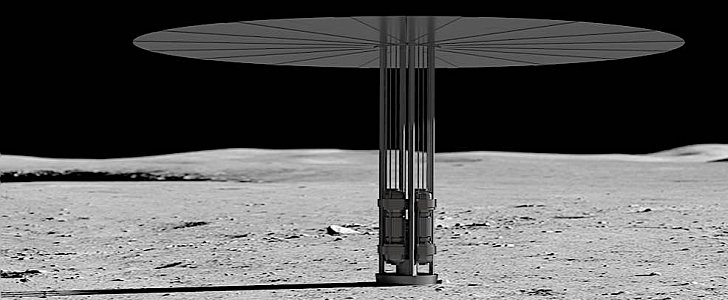A major hurdle in the way of making habitation possible for humans on the Moon, Mars or other planets is the lack of power, or the inability to generate enough to sustain long-term missions.
From November 2017 to March this year, NASA and the Department of Energy’s National Nuclear Security Administration (NNSA) have been conducting an experiment in Nevada to see how a nuclear reactor would fare with long-term use in adverse conditions.
The reactor NASA tested is called Kilopower Reactor Using Stirling Technology (KRUSTY). It is a lightweight fission power system capable of producing 10 kilowatts of electricity continuously for at least ten years. That amount of power is, says NASA, enough to power several average homes, or in this case, a small planetary habitat.
Power is generated by a solid, cast uranium-235 reactor core the size of a paper towel roll. Passive sodium heat pipes transfer reactor heat to high-efficiency Stirling engines, which convert the heat to electricity, according to the space the agency.
Being small and powerful, the system could be easily transported to the Moon, where when deployed it will be capable of generating power without having to rely on the sun. That would be difficult to do anyway, since a lunar night is equivalent to 14 Earth days.
The tests the reactor was subjected to included power reduction, failed engines and failed heat pipes.
“We threw everything we could at this reactor, in terms of nominal and off-normal operating scenarios and KRUSTY passed with flying colors,” said David Poston, the chief reactor designer at NNSA’s Los Alamos facility.
NASA plans to have the reactor flown into space in the near future, to see how it would cope with takeoff and zero-G. If that ends well, KRUSTY will find its way into habitats planned for the mid-term future on the Moon and Mars.
The reactor NASA tested is called Kilopower Reactor Using Stirling Technology (KRUSTY). It is a lightweight fission power system capable of producing 10 kilowatts of electricity continuously for at least ten years. That amount of power is, says NASA, enough to power several average homes, or in this case, a small planetary habitat.
Power is generated by a solid, cast uranium-235 reactor core the size of a paper towel roll. Passive sodium heat pipes transfer reactor heat to high-efficiency Stirling engines, which convert the heat to electricity, according to the space the agency.
Being small and powerful, the system could be easily transported to the Moon, where when deployed it will be capable of generating power without having to rely on the sun. That would be difficult to do anyway, since a lunar night is equivalent to 14 Earth days.
The tests the reactor was subjected to included power reduction, failed engines and failed heat pipes.
“We threw everything we could at this reactor, in terms of nominal and off-normal operating scenarios and KRUSTY passed with flying colors,” said David Poston, the chief reactor designer at NNSA’s Los Alamos facility.
NASA plans to have the reactor flown into space in the near future, to see how it would cope with takeoff and zero-G. If that ends well, KRUSTY will find its way into habitats planned for the mid-term future on the Moon and Mars.


